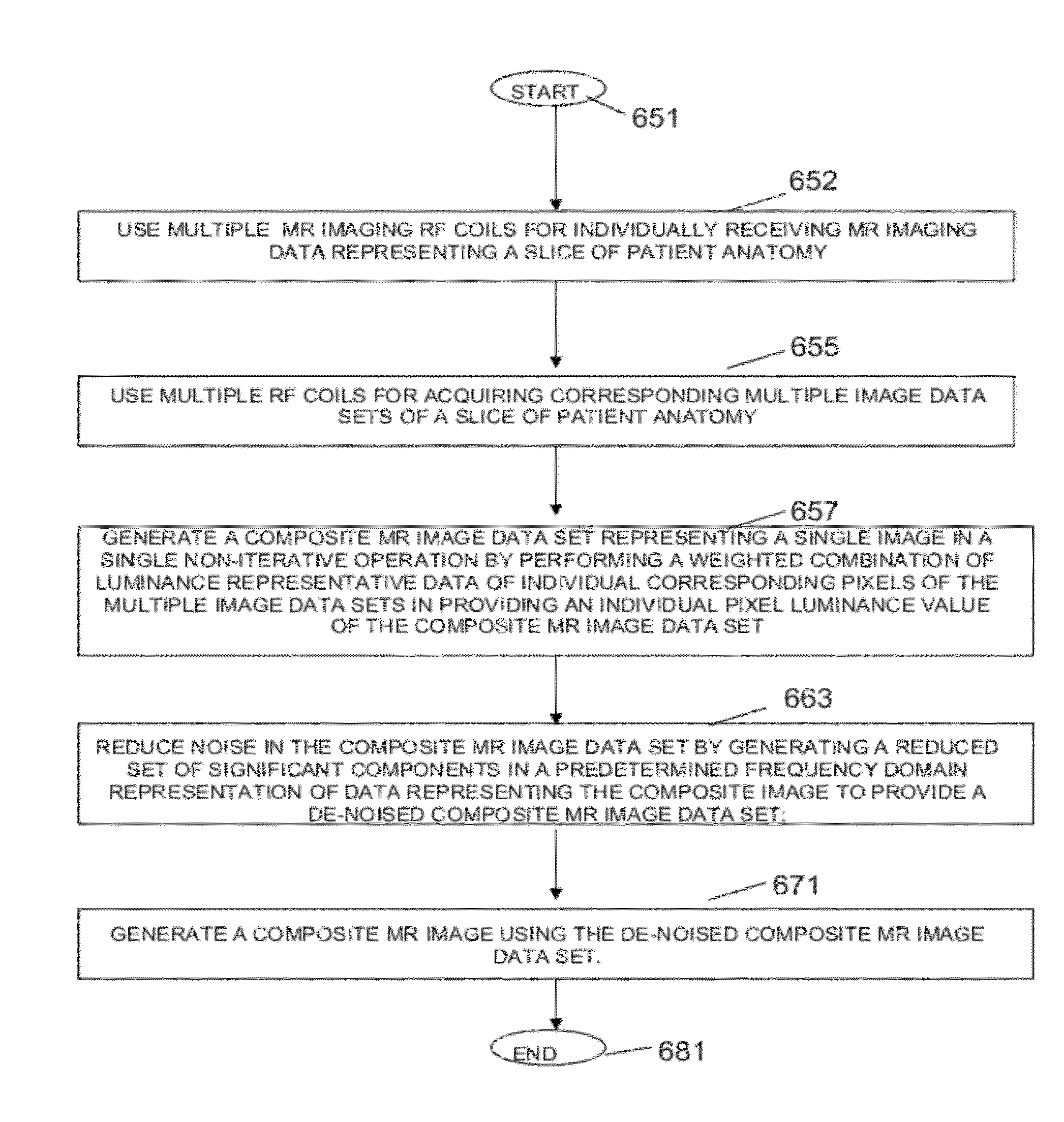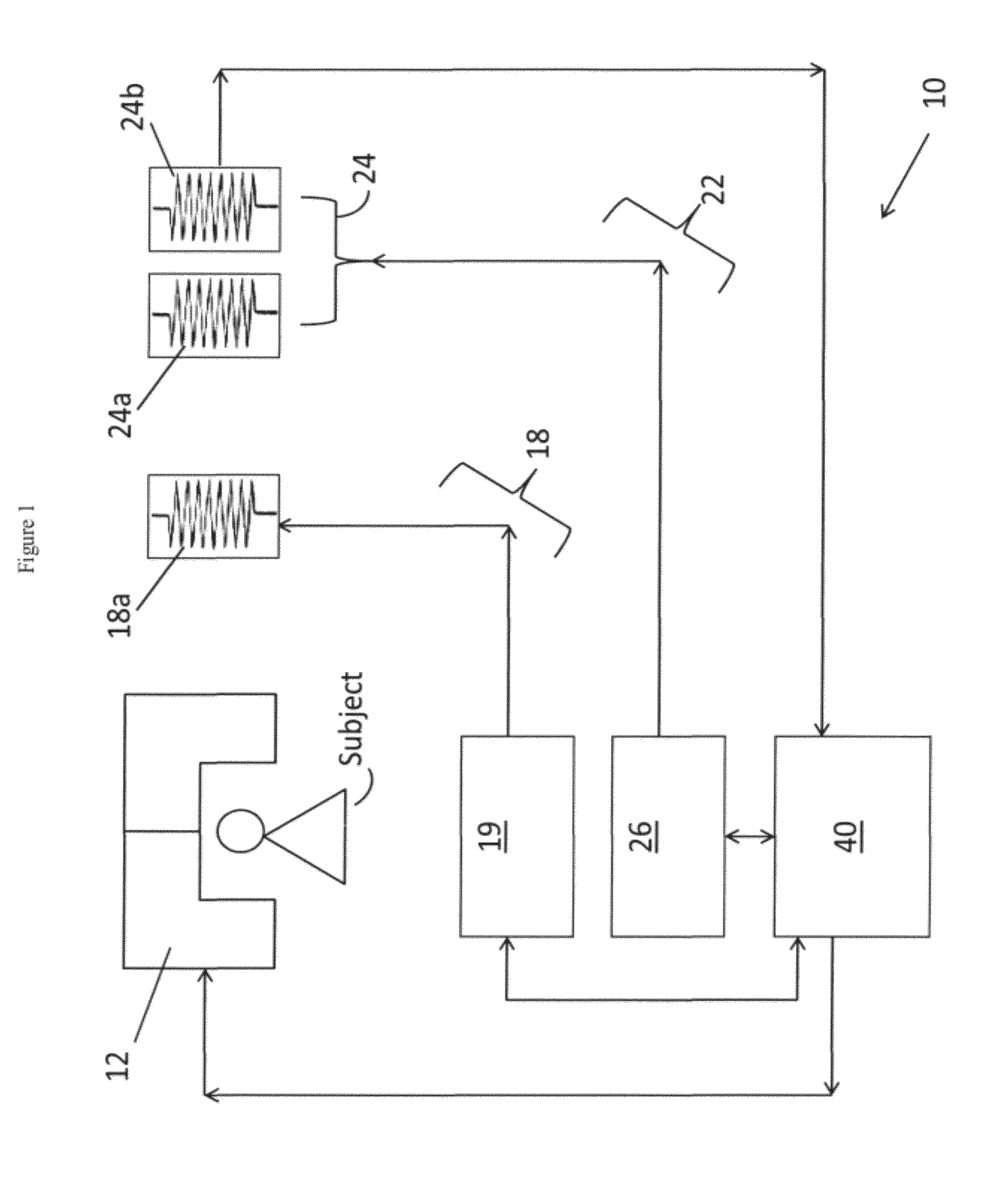System for Accelerated MR Image Reconstruction
a mri image and image reconstruction technology, applied in the field of parallel mri image reconstruction, can solve the problems of spir-it being more computationally intensive, affecting the accuracy of mri reconstruction, and reducing the acquisition time, so as to maximize the sparsity of estimated reconstructed images
- Summary
- Abstract
- Description
- Claims
- Application Information
AI Technical Summary
Benefits of technology
Problems solved by technology
Method used
Image
Examples
Embodiment Construction
[0029]A system accelerates magnetic resonance (MR) imaging beyond what is achievable using parallel imaging with GRAPPA (Generalized Autocalibrating Partially Parallel Acquisition) or compressed sensing (CS) alone using Sparse Reconstruction of Images employing a Nullspace method and GRAPPA (SpRING). The system adaptively selects an appropriate sparsifying transform and penalty function, and evaluates SpRING performance. The system optimizes trade-off between fidelity to a GRAPPA function and sparsity for different levels of acceleration.
[0030]FIG. 1 is a block diagram of a conventional MRI scanner 10 (simplified) that performs parallel MR image reconstruction in accordance with the present invention. A main magnet 12 generates a strong static magnetic field in an imaging region where the subject (i.e., patient or the specific body part of a patient to be examined) is introduced. The magnet 12 is used to polarize the patient's body part, i.e., certain atoms in the patient's body par...
PUM
 Login to View More
Login to View More Abstract
Description
Claims
Application Information
 Login to View More
Login to View More - R&D
- Intellectual Property
- Life Sciences
- Materials
- Tech Scout
- Unparalleled Data Quality
- Higher Quality Content
- 60% Fewer Hallucinations
Browse by: Latest US Patents, China's latest patents, Technical Efficacy Thesaurus, Application Domain, Technology Topic, Popular Technical Reports.
© 2025 PatSnap. All rights reserved.Legal|Privacy policy|Modern Slavery Act Transparency Statement|Sitemap|About US| Contact US: help@patsnap.com



